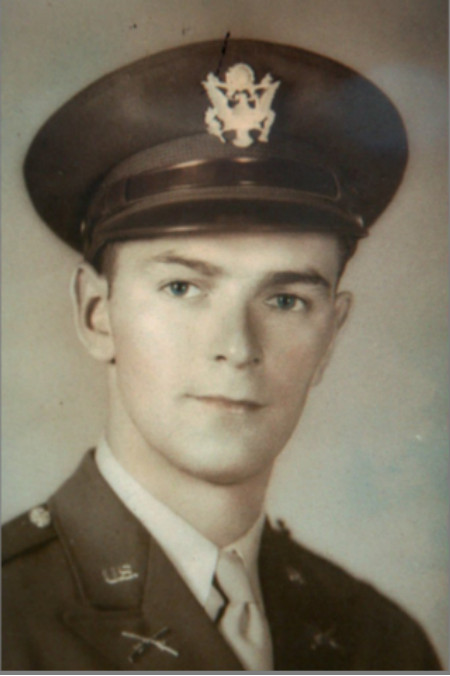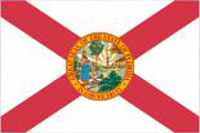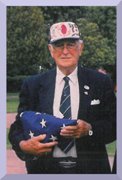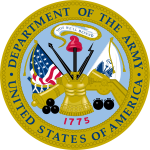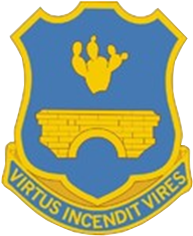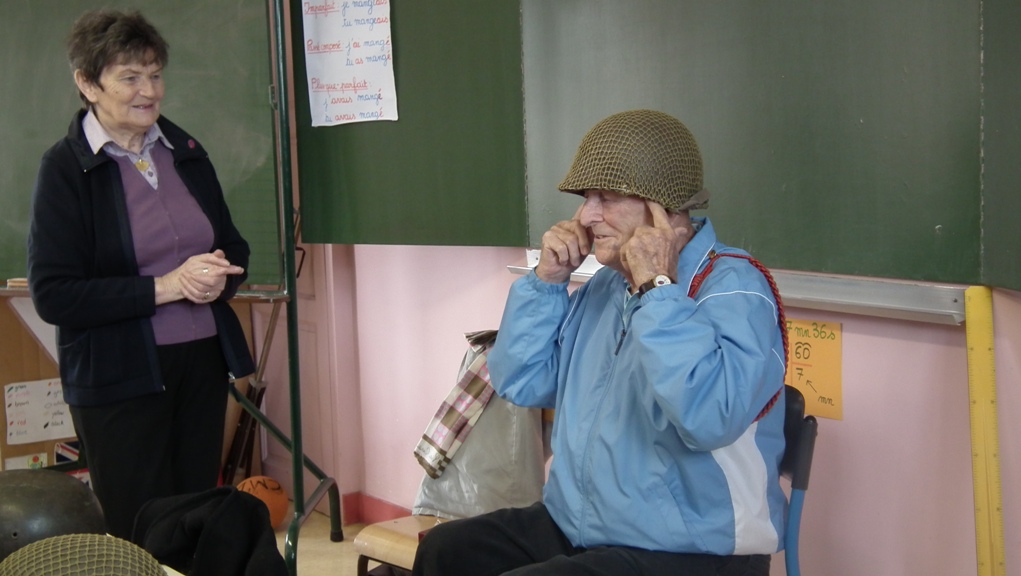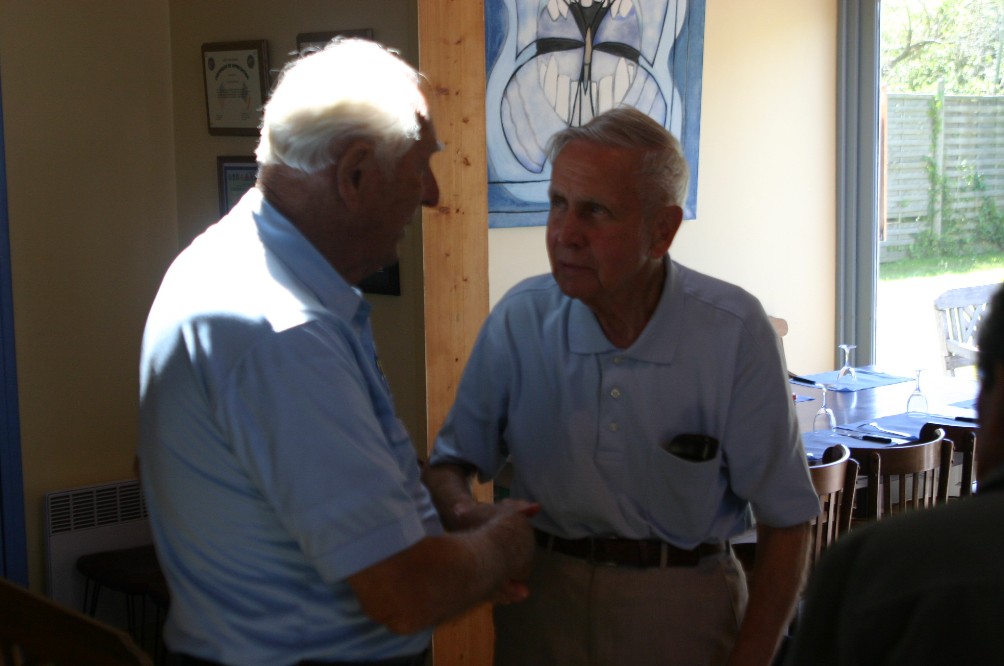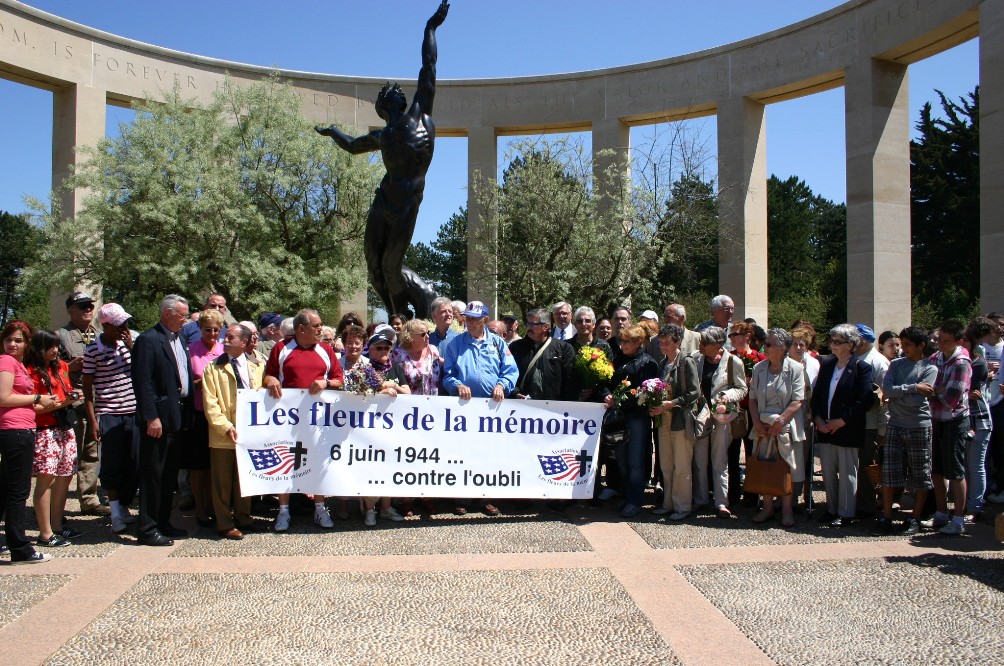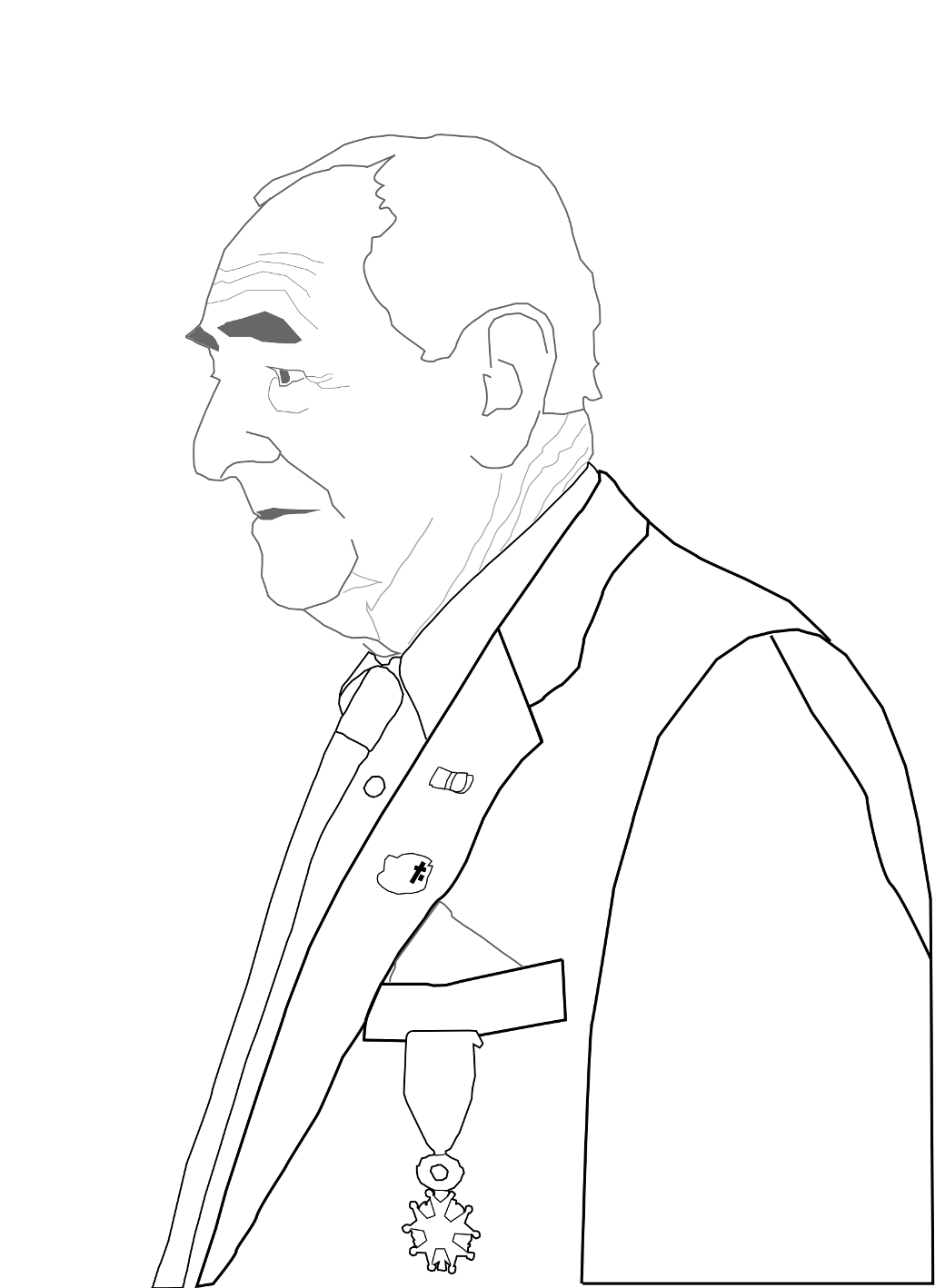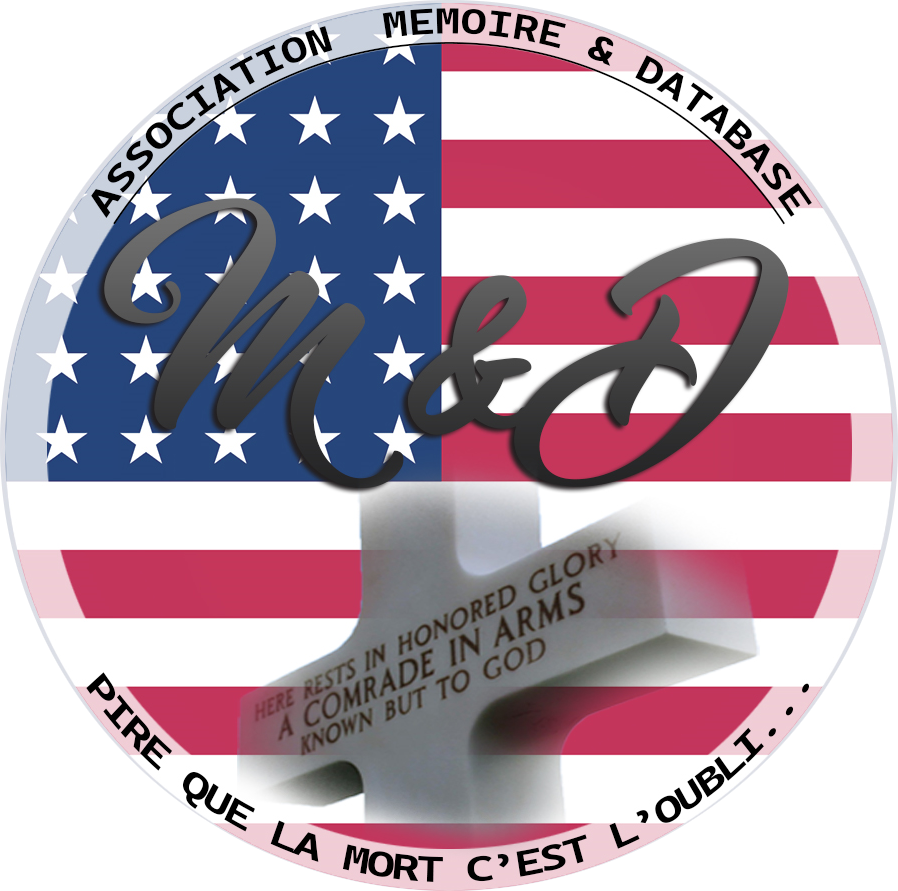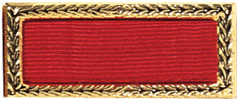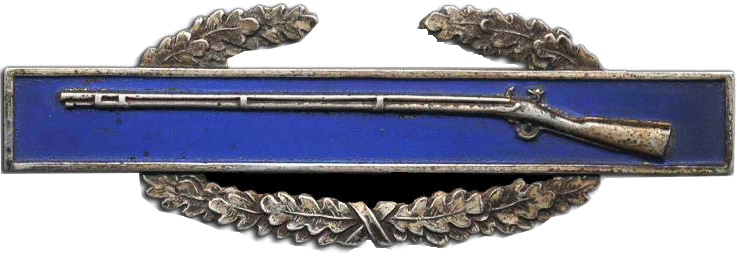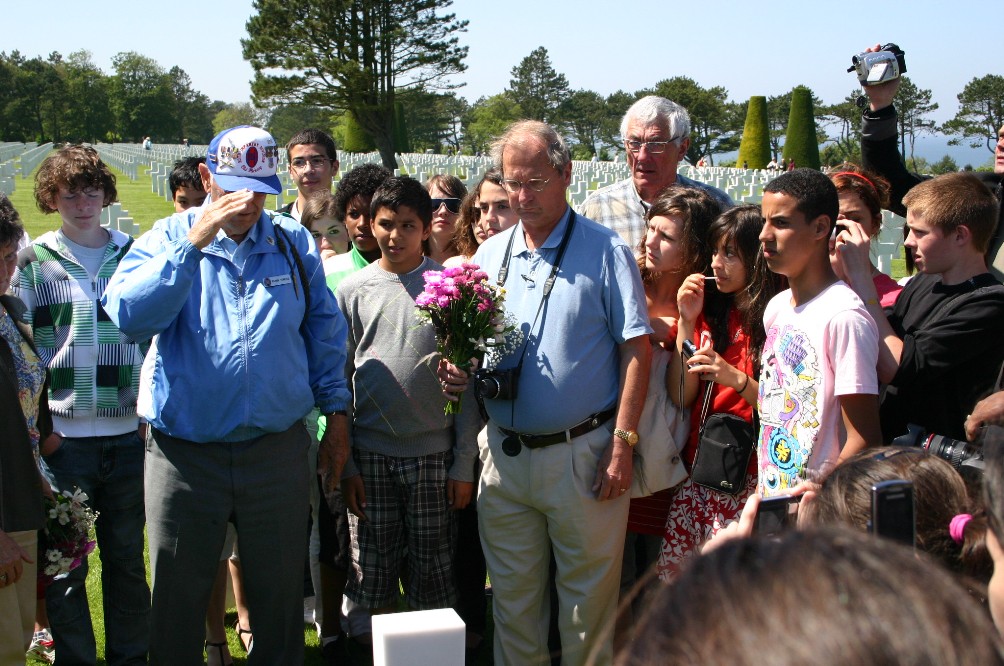In the beginning, in the 1930’s, there was a Depression.
Then the rumblings began in 1940, under the dark clouds of the impending WWII rolling in.
Although I was employed by the Commercial Credit Corp. as an adjuster at this time, jobs were not plentiful, and possibilities for upward movement were not good.
Employers were hesitant to promote or take on new hires, since the military draft having been established and draft numbers were being called up for the mandatory one year training, they did not want to train new employees, only to lose them to the draft within the next few months.
I then decided to get into the military draft and get it over with, then come back home and “set the world on fire” and thus become rich and famous.
Before you wonder about this, I became neither!
Since I had registered for the draft, #2001 in Burlington, Vermont, and very impatiently waited, my number was never called, so I volunteered and my new number was #V697, and I was placed near the head of the list at that time.
Still no call.
Again, becoming more impatient, I looked into the possibility of joining up with the local National Guard, which had been notified of imminent Federalization. It just so happened that they had two vacancies –at the bottom of the totem pole of course, as Private.
On 1 December 1940, I joined Company “K”, 172nd Regiment of the 43rdInfantry Division. This was a temporary enlistment of one year, at which time we would be released and would have satisfied the Draft requirements.
The 43rd Infantry Division was made up of units from Maine, Vermont, Connecticut and Rhode Island. The 172nd Regiment was from Vermont, and Co. K was from Burlington. Each major town in the State had its own Company, A through M.
I was issued appropriate clothing – all used – and had to be tailor altered, and used shoes. But it was a start, and then individual equipment was issued.
So here I was, a Buck Private earning $21.00 per month. Quite a come-down from the $25.00 per week that I had been earning! Talk about poverty and survival wages!!
During the days, we would work at our regular job, and every evening report to the Armory to start basic training. Incidentally, Co. K was a regular Rifle Company composed of about 120 men.
For training, the Company had 3 1903 Springfield 30 caliber rifles. We took turns familiarizing ourselves with these weapons. We learned how to disassemble then assemble the piece, and later learn how to do it in total darkness. It wasn’t easy for a city boy who had never handled a gun before!
Medical exams were scheduled at various times along with shots, further training each evening, and the time was starting to go by fast.
The alert came in early February, that we would be Federalized soon, so get your personal affairs in order and be prepared to leave Burlington, VT for parts unknown.
We were and we did.
On 24 February 1941 we were Federalized at the Armory, and this meant regular working hours for Uncle Sam from 8 AM to 5 PM, then additional training in the evenings.
We reported to the Armory each morning just before 8 AM, and marched – in ice, slush or snow! – to the Hotel Vermont for breakfast – real Army chow – not the regular menu fare; marched back to the Armory and were assigned duties, attended classes and participated in training of various sorts that could be conducted indoors. We trained with wooden guns and broomsticks. This was all that we had. The National Guard companies had only a very minimum number of weapons, as generally they were not needed and were not available in these days of peacetime. How we ever learned anything, I will never know, but we did.
Shortly the Company received one (1) M-1, Garrand 30 caliber rifle to train with, and learn disassembly and assembly. Yes, and in the dark. This weapon was to become the mainstay of infantry weapons all during WWII.
Each noon, we would march up to the Hotel Vermont for chow, then back to the Armory for more classes and training. Then each evening we would again march up to the hotel for chow, back to the Armory and were dismissed to go home – if we were all up to date in qualifying for various subjects and weapons.
On 9 March 1941, we entrained at the railroad station – in Pullman cars yet! – to go to some out of this world place called Camp Blanding down in Florida. We all asked, “Where in the World is Camp Blanding??
We had seen a photo of it – green grass, waving palm trees, nice block buildings we thought to be barracks and a couple of pretty nurses. OH!! This was the place for us, far, far away from the cold and snow!!
After 3 days on the train, we finally pulled into Camp Blanding. What a God-forsaken sight. There must be some mistake!?! Nothing but white sand, a few sprigs of grass and a few pine trees bedecked with dismal and dirty looking Spanish moss.
Getting off the train, we were ankle deep in sand. Dressed in our heavy wool uniforms with overcoats on, loaded down with full field packs and toting barracks bags, we were lined up, and our “smart” officers proceeded to “march” us to our designated Company area. After 10 yards, it was a useless attempt to even try to stay in step in the ankle deep sand, so we were allowed to break step.
Our barracks bags were made of blue denim canvas and was our travelling bag containing all of our extra clothing and personal items: ie shaving items, shoe polish & brush, stationery and any other personal items that were necessities. No civilian type of clothing was allowed! Generally they weighed about 50# - 60#.
Everything that we were issued was referred to as “G.I.” for Government Issue. Even the soldier became commonly referred to as a “G.I.”
Our assigned company area, one half mile away, had not yet had its buildings completed, except for the Mess Hall, Day Room and Company Hq. We had to sleep out under the stars in our two-man tents for about the next two weeks before our“permanent homes” were built.
This was a wooden platform about 16 feet square, with a flimsy frame siding with a pyramid shaped top, and all covered with what was known as a pyramidal canvas tent. In each one were 6 double bunks with a small coal stove in the center. This was to be our home for the next year. And so it came to pass.
It was quite a challenge for raw recruits to attempt to set up a two-man tent according to the manual. Tent pegs 8” long driven down into 1 foot deep loose dry white sand did not serve their intended purpose. The manual was written for hard packed dirt. Consequently, we just slept on our canvas tents and covered ourselves with our blanket for the night. Not entirely rainproof! But, we made the best of it.
Our Commanding Officer, (C.O.), Capt. Arthur K. Tudhope, was soon reassigned to be the Regimental Supply Officer. He needed staff, so I being one of the low men on the totem pole, and perhaps with the least amount of military training to date, was detailed to work with him, along with several others detailed from other companies. I was well pleased with this assignment, as I did not have to take the long hikes, some at night, and crawl around in the sand in training exercises, regardless of the weather. “I had it made” in this respect…
So, things rocked along well for the rest of the year, trying to get used to the intense heat, gnats, snakes and other unusual aspects of life that we were not used to.
At the end of my first 6 months, I was promoted to Private First Class. Wow! My pay increased to $30.00 per month!! But then, we didn’t have too much to spend it on, and we didn’t have much time to go anywhere to spend this great wealth.
We had done so well on our maneuvers in Louisiana during the summer and in the Carolinas in that fall, that on 1 December, we were told that we could start packing up to go back home about the first of January. OH!! Happy Day!!
But then came the astonishing news on the radio Sunday morning, 7 December 1941, the day of infamy, the day that Pearl Harbor was bombed.
Needless to say, right then we knew that we would not be going home, but were to be incarcerated “for the duration”. True enough, a few days later, official word came down that we were indeed “in for the duration”!
Things began to change quickly then. More new supplies, new guns and other equipment came pouring in. Many changes were taking place in the company area. The new C.O. was being sent to advanced school; the 1st Sergeant was being transferred to the Air Corps; the Supply Sergeant became the 1st Sergeant; and I, with my work background in the Regimental Supply was transferred back to Company K and promoted to Sergeant and became the Supply Sergeant for the Company.
In early February we got our shipping orders to go to Camp Shelby near Hattiesburg, Miss., to do some advanced training there, then to proceed to Fort Ord, Calif., and await embarkation to the Pacific Theater.
In March, I was called in for an interview by my former C.O., Maj. Tudhope and the Regimental Commander and others, acting as a Review Board, to interview prospective applicants to go to the Officer’s Candidate School at Ft. Benning, GA, to take further advanced infantry tactics and weapons training, to become a commissioned officer. I never really got any basic infantry tactical training, and precious little weapons instruction, although I did fire all weapons and qualified with each one. I was selected and shipped off to Ft. Benning to upgrade my status in life and to become a commissioned officer.
It was a struggle, competing with other men who had had many months or years of military training and as instructors in their companies. This was a 3 month course, thus the nomenclature upon graduation was “90 Day Wonder”.
About midway through the course, I came down with food poisoning, along with several others. This knocked us out, as the course would be too far ahead for us to catch up. A short leave, and we were allowed to start back at the beginning again in another later class. After having 1½ months of this training, it was much easier the second time around, and I successfully completed the course in September 1942.
Upon graduation, I became a 2nd Lieutenant – a 90 Day Wonder – and much to my disappointment at the time, I was assigned to Camp Wheeler, GA as a Basic Training Instructor of draftees, just coming into the military for 12 week basic training cycles. Many of my graduating classmates were assigned directly to the 1st Infantry Division, which had just pulled off the invasion in Africa. That is where I wanted to be at the time! “We’d” win this war and get it over with in a few months. Little did we know of the heartbreak and suffering to come in the next many, many months.
While at Camp Wheeler, GA, I received my promotion to 1st Lieutenant, became engaged, and was married there in a military wedding on 1 March 1943 to a girl that I had met in Jacksonville, FL, (Mary Olive Thomas) while I was at Camp Blanding. Here it is 55 years later, and we are still hanging around together!!
I remained at Camp Wheeler until November 1943, and was then transferred to the 30th Infantry Division. They were then stationed at Camp Atterbury, Indiana. I was then assigned to the 120th Regiment, Company “M” a Heavy Weapons Company, as a Mortar Platoon Leader. This was short lived, as the Company was then over-strength. I was then temporarily assigned as the Regimental Packing and Crating Officer, in charge of supervising the packing of all authorized equipment of the Regiment, all of which had to be accounted for, packed in standard crates, waterproofed and prepared for overseas shipment.
In early February 1944, we departed Camp Atterbury, IN, to –rumor-rumor-rumor. All flying fast and furious, but we finally arrived at Camp Myles Standish, Mass. Here we were quarantined for a few days, then allowed to go on pass. At that time, my home being in Boston, Mass., that is where I headed. Mary had gone there to stay with my mother, for the duration or until I came back – if I came back!?! So it was quite a surprise when they saw me standing at the front door that night. This went on for several days, then we got our alert for shipping.
Our entire Regiment boarded the S.S. Argentina and sailed out of Boston harbor on 12 February 1944, and joined in with the largest convoy to ever cross the Atlantic. We had an uneventful crossing of 10 days, and arrived in Glascow, Scotland on 22 February 1944.
I was with the detail in charge of unloading the ship and getting it all loaded on to freight cars for shipment to southern England. After a week here, and with all of the equipment loaded, we left Glascow and went to Bognor Regis, on the southern coast of England. My work continued here to supervise the unloading and distribution of all of the freight. Out of 140 tons of equipment, only one bundle of tent pegs was lost!!
This task accomplished, I then reverted to my original assignment with Company M.
From February until late May, we conducted many hikes, maneuvers and engaged in a few live ammunition tactical problems in preparation for the days to come. We were also engaged in patrolling along the coastline in the area in which we were billeted.
Then came D-Day, 6 June. We knew that this was the day and the real thing, after many false alerts, because of the roar of the planes overhead from midnight onwards.
Fortunately we were not in the first wave of the invasion. This was assigned to the 1st, 29th, and 4th Infantry Divisions. Later this was followed by the 2nd, 9th and the 30th Divisions. The 82nd and 101st Airborne Divisions were the very first troops – paratroopers – to land in Normandy , in the early hours of the morning of 6 June. These are the ones that we heard roaring overhead on the night of 5-6 June.
It soon came our turn to go to the marshalling area where we were “locked in” for a couple of days waiting for our scheduled time for embarkment. Here we were out of touch with the outside world. No one in or no one out, no letters, just marking time, and checking equipment.
On our somewhat rough trip across the English Channel, we were packed in like sardines in our assigned LCI, (Landing Craft Infantry), and being dedicated land-lubbers, each man was issued a “puke bag”, so as to keep the vessel neat and tidy. Needless to say, a few of the “puke bags” broke or overflowed, and the steel deck was a slippery and slimy mess. One poor guy, being very sick, could not make it to the side of the ship to throw up overboard. Being a “neat person”, and not wanting to mess up the walking area any more, he dutifully threw up in his helmet. Along with the “puke” came his false teeth! What to do? It didn’t take him long to figure it out! Why quite naturally he reached into his helmet and retrieved his teeth – and then stuck them back in him mouth!! Needless to say, in spite of being very hungry, we did not eat any breakfast that morning!!
So, the 30th Infantry Division, landing on 13 June, did not take the brunt of the initial assault, but it was there early on, and evidence of the terrific carnage that befell the predecessors was a horrible and frightening sight.
As for my own experience in the landing, it certainly was unique, and I, along with my Company, had the dubious honor or experience of landing on Utah Beach and Omaha Beach on 13 June 1944.
Somehow, by error, the Landing Craft Infantry (LCI) that we were on was a U.S. vessel, commanded by Canadians and under the control of the British, and it became a part of the wrong convoy while crossing the Channel. What could be more conducive to errors than this mixed control situation?
Only upon reaching and landing on Utah Beach did we realize that something was wrong. We had been told that the Omaha Beach area was cleared and out of range of mortar and artillery, and that we would land on a narrow beach and would be facing substantial cliffs, and then we were to march up through a draw between two of these cliffs. Not so! Our approach was to a wide beach with no cliffs, and sporadic mortar and artillery were landing on the beach. This was Utah Beach, not Omaha Beach, for which we had been oriented. When the error was discovered, after disembarking the whole battalion, we had to re-embark and get out of there. In the meantime, the tide was going out, and as we boarded the LCI, it became bottomed on a sand bar. During this time, a few enemy mortar and artillery shells fell in the area, but only one was a direct hit on our LCI and there were very few personnel casualties. Another nearby LCI came to our rescue, and with ropes, was able to drag us off the sand bar, and we proceeded on our merry way to Omaha Beach, where we should have been landed several hours earlier.
I can well remember this incident on this day, as it was my 27th birthday, and this was the biggest reception, although not friendly, that I had ever received – even to date.
Prior to dis-embarking from our LCI at Omaha Beach, we were sternly warned that when we went over the side and down the rope ladder/netting, to be sure that we had our rifles under control and well secured, and to hold them high above our heads as we waded ashore. “This was your protection of your life”! No replacement rifles would be available for a long while. Hang on to it and keep it dry!! Over the side we went, and who was the first one to drop and lose his rifle? Yes, our Company Commander, Phil Chandler, the very one who had been so emphatic on the warning to hang on to your rifle. He didn’t hear the end of that episode for a long time, and he was very embarrassed about it. We then joined the rest of the 120th Regiment, and started preparing for our first contact with the enemy. We relieved a part of the 101st Airborne Division and a part of the 29th Infantry Division, and planned our first attack.
Again, fortunately for me, Company M was still over strength – although it would not be for long –and being a junior officer, was assigned duty as a Liaison Officer between the Battalion Hq. and the Regimental Hq. My duties here consisted of being a “glorified messenger boy”, carrying messages and orders forward to the Bn. Hq. well before phone lines could be established or radio contact made, due to being out of range, batteries low or radios damaged, or at some times when it was necessary to observe radio silence. Sometimes it was rather difficult to find the Bn. Hq., as it may have moved since I had last received directions or it may have been over run and captured. We never knew. Often it was necessary to hunt for the Bn. Hq. in the night –pitch black- and trust to luck that you did not run off the road, run over a mine, or over shoot the front lines and end up in enemy held territory. This latter happened more than once, but luckily we were able to get turned around before being discovered.
Here we had our introduction to “hedgerows”, something that we had never trained for. Hedgerows are built along property lines, roads or fence lines, defining fields. These are composed of rocks and debris picked up in the field areas during the plowing of the land, which is placed along the perimeter of each field. Through the centuries, with accumulation of dirt mixed in with the rocks, trees and bushes started to grow. They were generally shoulder high, and 8' to 10' through at the base. Being a tangle of roots among the rocks, they were nearly impenetrable. Passage through them from field to field was accomplished by dynamiting, or by tanks equipped with dozer blades or fork lift blades which could then barely ram a hole through the hedgerow. The fields were of all sizes and shapes, and very difficult to attack and gain ground, as there were often Germans just on the other side, and when you stuck your head up, you were a prime target and easily picked off.
Artillery was our major salvation in that we could bring down a barrage of air-bursts, which were deadly to the Germans.
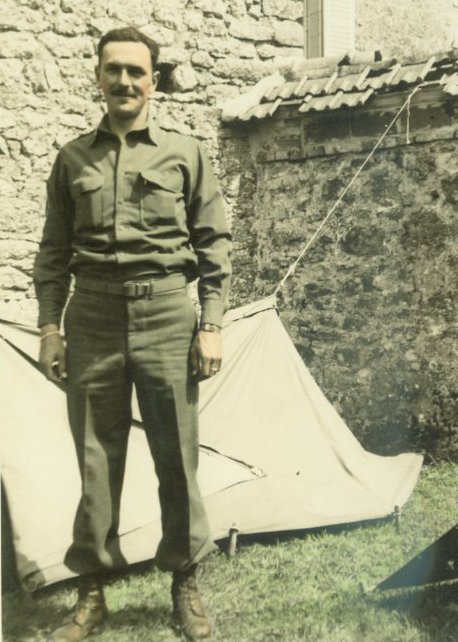
Mont Martin-en-Graignes, France,
July 4, 1944 (Courtesy Frank Towers)
In early July, we encountered one of the earliest major counter-attacks, when the Germans hit us with all that they had, and made several penetrations into our lines, but were finally stopped with out severe damage to our defenses.
Prior to this, we had been steadily, but slowly attacking and gaining ground. On several days, it was a 24 hour day contact and attack of the enemy, and no one got much sleep, just sporadic cat-naps. So much so that after a few days of this, I could just lean against a tree and go to sleep – but not for long.
Finally one has to give in, however reluctantly, to the forces of nature, and due to the constant shelling and concussion, and being exhausted, I developed what became known as “Battle Fatigue”, formerly called “Shell-shock” in WWI. After some personal denial and persistent persuasion by some attending medics, I was evacuated by an adjoining armored unit. Therefore, no record went back to my headquarters, and I was presumed to be killed in action, or missing in action after several days, or possibly taken as a P.O.W.
I was evacuated back to a Field Hospital near Omaha Beach at the town of Bernesque. I was treated for a few minor wounds, and was given battle fatigue treatment for 10 days. I then returned to my Regiment, where I was returned to the land of the living, and assigned back to my previous duties.
The day I returned, turned out to be another disaster for the regiment. This was on 24 July 1944, at the beginning of the major, major attack named “Operation Cobra”. This was an operation planned for our Division to break through the German defenses, thereby creating a major passageway and route for the newly formed Third Army, under the command of General Patton, to race through with his armor and race southward to Avranches and thence onward to Brest.
All of this action was commonly called the “Saint Lo Breakthrough”.
The big plan was for the Air Corps to make a saturation bomb run just in front of our Division, using the St. Lo-Perriers highway as a bomb line. Our troops were moved back 1,000 yards north of this line as a safety factor.
To assist in defining the bomb line of the St. Lo-Perriers highway, our artillery placed red smoke shells just south of the highway. Unfortunately right at this time, a slight breeze came up from the south, causing the red smoke to slowly drift to the north, and directly on our troops in the front lines. Over 1,500 of the Air Corps heavy bombers came over exactly on time and on course, and dropped their bombs right down on our troops, and as far back as the Regimental Hq. This is when I arrived back at Hq. from the hospital, and everything was a chaotic mess. Even the ambulance in which I had returned from the hospital was destroyed with a direct hit of one of the bombs.
We had a loss of over 150 men killed or wounded in this catastrophe, and the attack was called off. Almost immediately, fresh replacements were brought in to fill up the ranks and preparations were made for the attack on the next day.
Since all phone lines were totally destroyed and most radios suffered damage, there was little or no communication between the Regimental Hq., the Bn. Hq. and the Companies. This is where my job became frantic, trying to keep messages and orders for the new attack flowing in a timely manner. So, this continued through the day and that night in preparation for the attack the next morning at 11:00 AM.
The same procedure was put in place the morning of the 25th, and again, same bomb line, same red smoke put out and, same breeze came up again!! Right on time the 1,500 heavy bombers came over and dropped their load right down on the red smoke line, which was again right on top of our troops. In this incident, we sustained 662 casualties. Among those killed was Lt. General Leslie J. McNair, who was with our 2nd Bn. to observe the progress of the attack, and to visually inspect and assess the damage done the day before.
Again I was kept extremely busy day and night carrying new attack orders forward, and bringing back an assessment of the damage and casualties incurred, as well as the specific plan of attack for the next day. Damage and casualties were beyond imagination! Bodies and wounded men were lying all around. The wounded were being given aid by our medics, and arrangements were being made for their evacuation.
Since time was of essence at this point, and the element of surprise had been lost, it was decided to go ahead with this attack with what we had, and to do the best that we could. An immediate supply of replacements would not available for another day or two.
At the end of this day, the attack being successful, a wide breech was made in the German defense lines, and almost immediately, Patton’s Third Army began pouring through, and headed for Avranches against very light resistance.
Our Division was then pinched out of the line of attack and went into reserve for rest, recuperation, re-supply and replacement of the men lost in this action. But only for a short time. In two days we were on the move again, to a new battlefield.
At this point, I was assigned to a higher level and became the Regimental to Division Liaison Officer, executing the same type of duties, but on a higher security level. This in turn took me further away from the front lines, but still in a sensitive position, but doing much more traveling, and enabling me to see more of the “big picture”.
Now I want to stop here and interject a little bit about our personal life style at this time, and in general from here on until the end of the war.
Normally, as we were taught, and as we moved up and stopped overnight, one of the first things that we did was to dig a fox hole or a slit trench. Fox holes for long stays, slit trenches for 1 night stops. Each man for himself, to pick his “spot” and dig, even officers – of low rank! After we dug the slit trench which measured about (body size), 6 ½’ long, 2’ wide and 1’ – 1 ½’ deep, we would dump in some hay, straw, dead leaves, (mulch), or pieces of cardboard from the food boxes in the bottom, to soften the jabbing of the jagged rocks in the terrain. We would then line this with our canvas tent and blankets. Not to worry about the rain! Fox holes were a little more permanent and substantial. Usually a few men would get together and dig a pit 4’ – 5’ deep, 6’ – 7’ long and 4’ – 6’ wide, big enough to accommodate 2 or 3 men. This then would be covered over with logs, boards, a door or what ever we could find for a cover. This was then covered over with 1’ – 2’ of dirt. We would leave an opening at one end, just large enough to have access to the fox hole. All of this was necessary to protect us from shrapnel from the artillery shelling at night. Staying in houses at this time was not wise, as the Germans had them zeroed in, and continually fired on them. So, this was our sleeping quarters during the first two months of combat.
Often we would utilize fox holes dug by the retreating Germans, if they were in a favorable location, and relatively clean. Usually these were on the south side of a hedgerow, so were not in the best of location for us We would try to locate our fox holes or slit trench on the north side of hedgerows, and usually in a corner of a field for the best protection.
I had a good jeep driver, and two guards with me constantly, so I had good help in the foregoing operation.
My driver was Ralph Winters, who was a roly-poly young boy from Pennsylvania, and had been a coal miner before getting into the Army. Everyone called him “Wimpy” because of his professed love of the famous Wimpy Hamburgers.
Our food consisted of the normal C and K rations. C was 3 cans per day per man of various combinations of food, and the K was 3 boxes of a variety of concentrated foods, cigarettes, and toilet tissue, one box designated for each meal. I always thought that they were pretty good, although others didn’t. This was utilized when we were on the move, but each Company had a fully equipped kitchen truck, which had 4 stoves and ovens mounted in it. When there was a 1 – 2 day break, they prepared hot food and brought it forward in large containers and fed the troops after dark each night. Some days it was pretty good, but other days it was horrible, but it was hot. This was where the C & K rations came in handy!
During the course of my duties at night, we often did not get back to our headquarters until very late, and the food was all gone and the kitchen closed. So, C or K rations!
So, my enterprising driver Wimpy and the guards started “liberating” food from the local area farms: potatoes, apples, turnips and whatever else could be found. They also scrounged the kitchens for any “left-overs” of odds and ends. So now, we had to have some meat, so a few chickens were occasionally liberated, as well as a coop to keep them in. Well, we had our own private supply of eggs and chicken to eat. At times we would find a hog that was willing to sacrifice its life, so that we could have bacon and ham with our eggs. Some of these boys were good ole farm boys, and knew how to dress out a chicken and a hog, and boil the chicken in a pot and we would have chicken soup or stew. Sometimes they would luck up on a small supply of lard or fat of some kind – usually liberated from one of the kitchens, and we would have fried chicken. Not the best seasoned in the world, nor sanitary, but when you are hungry, you do not question these trivialities, nor where it came from.
As we moved forward each day, we loaded up our chicken coop, and usually enroute we would find a stray chicken, or liberate one from a farm that we were passing by as replacements for the ones we consumed. My crew and I looked like a bunch of Oakies rolling down the road!
And as a diversion, being in the follow up of the front lines, and yes, even to the rear, almost every day we would find a cow that had just been “accidentally hit” and killed by artillery. My boys would butcher off a hind leg, dress it, and we would have steak! Not exactly able to cut it with your fork, but it was tasty to us, and a change, and better than some of the regular rations.
Needless to say, we did not have to worry about liquids to drink with our meals, as I became a pretty good scrounger, and found many bottles and barrels of wine and Calvados, a very famous and potent drink of Normandy, in the cellars of the farm houses we passed that were unoccupied – bombed or shelled out! Some of it was pretty good, and some was rot-gut. We soon learned that this latter was “green” un-aged wine and not fit to drink.
Still we needed to be very careful in our liberating and scrounging, as the Germans were very adept at booby-trapping anything that was left behind, and could not be taken with them. This would involve attaching a very fine wire to the item and concealing the wire, which would lead 2-5 feet away, and attached to a personnel mine or other type of explosive. When the article was disturbed or moved, the wire would release the firing mechanism of the mine. Frequently severe accidents happened this way. The Germans knew that we were great souvenir hunters and scroungers, so, much material and equipment, and even dead bodies were booby-trapped.
We all had sufficient training in this so that these accidents should not have happened, but some were in a hurry and got careless. Needless to say they paid a steep price for their folly.
Usually anything that was suspect of being bobby-trapped, was left alone and the Engineers were notified of its location. This was one of their jobs, in which they had a great deal of expertise in de-activating these booby-traps.
From the very beginning, a very important factor was sanitation, and at each stop of a day or more, a large slit trench was dug, and surrounded by a canvas “privacy” shield. A series of forked cut off branches were implanted in the ground near the edge, and then a long sturdy branch was laid in the forks, making a seat for a latrine (out-door toilet). After a day it began to become mellow, and lime was continually sprinkled in it, but the methane gas continued to permeate the trench. So, with all of the paper in the trench, it was common to drop a match into it, when one of our “prima-donnas” were resting, causing a mild explosion and fire. There was a quick evacuation!! We had to get our fun wherever we could get it…
We, being the combat liberators of all that was good, we had a very possessive spirit, and somewhat selfish motives too. Upon evacuating any comfortable quarters that we had embellished, we usually said “good-bye” to it by tossing in a grenade. Also, all barrels and cases of bottled wine and Calvados that we could not move, were delivered a coup de grace with an axe. This was done so that the men in the rear echelons would not fall victim to the frailties of mankind and get drunk, and thereby be unable to execute their administrative duties. Also since we had an ample supply of the “stuff”, we could use it as barter material for some good food supplies and cigarettes, of which they seemed to have in more than ample supply.
Another important item was bathing and laundry. For the most part, our daily personal washing was done in our helmet: brushing teeth, shaving, bathing – such as it was – and we did some light laundry in it too – socks, handkerchiefs and underwear. All of this was pretty primitive, but water was at a premium and we were only able to get a limited amount each day for “drinking purposes only”. So thanks to the liberated wine that we had to drink, we could use the water for washing!
Periodically about every 2 – 3 weeks, the Engineers would establish a shower point. At this time, most all of the men were slowly rotated back for a shower (cold of course), and got a complete new set of clothing. This was a great day, as after 2 – 3 weeks of no bathing nor change of clothing, some were smelling pretty “ripe”.
Later on in August and thereafter, we became more adventuresome and willing to take more risks and we started staying in abandoned farm houses, and some houses in town, usually sleeping in the cellar for best protection. As we moved along during the “rat- race”, we became more selective and picked out some better “chateau’s” to stay in for a day or two.
Once we got over into Germany, it was no problem requisitioning any house and to evict its tenants. So here we were finally, comfortable, and sleeping in beds!
We were the conquerors, so “To the Victors Go the Spoils”, and the Germans understood this, and were quite cooperative. What else could they do?
Our Division’s next assignment was a long move down to Mortain, to relieve the 1st Infantry Division, which in turn was to join up with Patton’s Third Army and go to Brest, for the attack and further operations there.
While enroute to Mortain, we were still in frontal contact with the enemy, although they were conducting a rapid retreat and redeployment. During this advance, I was in contact with an armored unit attached to us, and near the front of the column of tanks conversing with the tank commander and getting an assessment of the situation at hand. All of a sudden, the lead tank, beside which I was standing, was hit by a German 88mm artillery shell. It was not expected and was quite a surprise, but still it was part of the delaying tactics of the Germans. The shell hit directly on the nose of the tank, and shrapnel flew in all directions. I was struck in the face by a large number of fine splinters of steel – almost like a stubble of a beard. Only one small sliver was imbedded deeply in my lower cheek, and since it didn’t hurt, the medics declined to remove it, as it would have required surgery. It is still in there today and causes no pain or problem. It only causes concern and questions to my dental technician when X-rays of my teeth are made, and the small piece of shrapnel shows up. Something new to them!!
Our Division fully replaced the 1st Infantry Division by 8 PM on the evening of 6 August, on a relatively quiet front – allegedly. The 2nd Bn. of the 120th Regiment occupied positions up on Hill 314, just east of Mortain, and was in a great defensive position. Around midnight, German activity started moving to the front, and 3 Panzer (Armored) Divisions, with attached infantry, attacked Hill 314. This hill was a very prominent point in the terrain, and most important for purposes of observation. He who held this hill, had control of the road network for a 20 mile radius. The Germans wanted and needed this hill, at any cost, for their plan to break through to Avranches, to be a success.
It was my job to keep communications flowing from the Regimental Hq. back to Division Hq., keeping them fully appraised of the activities and situation on the front lines. This was a precarious job, as I could carry no maps, no written messages or anything that could be of value to the Germans in case I were to be captured.
The Germans had already captured our 2nd Bn, Hq. and taken most of the Battalion staff prisoners, including the C.O., along with many more of the area defenders and medics. They had broken through our lines in many places. This made travelling very difficult, as during the course of this 6 day battle, one never knew just which roads were accessible or not. Mostly we had to use small dirt trails, unusable by heavy vehicles or tanks, but even then some of these trails were under the control of the Germans, so alternate routes had to be found.
Our 120th Regimental Hq. was nearly over run on two occasions, and they had to hastily displace to the rear on very short notice. To where, no one seemed to know, so this was one of my duties – to find them wherever they may be. Fun, fun! At this point, we were occupying substantially well constructed stone farm houses as headquarters, using the cellars for adequate protection from artillery and bombing.
At this point, our Division HQ. was situated in a very nice rural chateau, named La Bazoge, with 25-30 rooms in it. All of the Division offices were located in the cellar areas. I had a small room here as my “home”, which had been a former coal bin – such luxury!!
This concluded the Battle of Normandy, officially named the “Normandy Campaign”.
After the Battle of Mortain, we started moving eastward on what we called the “rat race”. We would move 25-50 miles in a day, just keeping the Germans on the run. As we moved forward, it was most difficult to keep up with the location of the Regimental HQ., reporting this back to Division HQ., then racing forward again to locate the new location of the Regimental HQ. etc. Each trip, reporting the progress and location of the front lines, thus enabling the Division HQ. to assess their progress and make plans for the next day’s advance.
Throughout this rat-race across Northern France and Belgium, we moved as much as 125 miles in one single day, the furtherest advance ever made by any unit in history of warfare! In doing this, we out ran our supplies of all kinds, particularly gasoline and ammunition, which could not be brought forward fast enough. Consequently, many vehicles were left along the side of the road, only to be retrieved much later, and ammunition was actually rationed!! Can you imagine fighting a war and being limited to firing three artillery rounds per gun per day, or ten rifle bullets per day?? So it was for several days. Fortunately, since we were in rapid pursuit, there was not much time for actual fighting, and we by-passed many small pockets of the enemy left behind for delaying tactics and were known as “snipers”. They would harass and fire on any targets of opportunity whenever they could to slow down the advance of our troops, particularly the rear echelons.
One particular incident relating to snipers comes to mind. One of my colleagues, Lt. Harrison Swilley, a big guy from Texas, was the Liaison Officer from the 823rd Tank Destroyer Battalion. He drove a Harley-Davidson motorcycle in his line of duty. One day as he was returning to the Division Hq., the urge of nature caught up with him, so he pulled off the road and stepped into the edge of the woods. Yes, he still had a little modesty left. His uniform consisted of a heavy jacket and tanker’s overalls. All of this had to come off and beneath this was heavy underwear (long-johns), with a slit in the seat to facilitate relieving one’s self when necessary. At some time during his “relief” a sniper spotted him, took aim and shot at him, striking him squarely in the fleshy part of his buttocks. He was startled to say the least, grabbed his jacket, pulled up his overalls and jumped on his bike. Shortly he came speeding into the Division Hq., screaming, “I’ve been hit, I’ve been hit, where’s a Medic?” Upon learning the story, we all broke up laughing about it. Thankfully it was only a minor flesh wound, and not serious, but just the circumstances of this incident made it funny. He was awarded the Purple Heart Medal for this, as it was a combat wound. I always wondered just how the citation read?? This “rat race” continued on through August, which was called the “Northern France” Campaign.
On the 2nd of September we crossed the border into Belgium and thereby became the first Allied troops to enter Belgium. We continued on the “rat race” and on 12 September 1944, we crossed the border into The Netherlands and again became the first Allied troops to enter The Netherlands, and then we began to run into stiffer opposition as we approached the Seigfreid Line on the German border.
From here we continued our attack through the Seigfreid Line, took part in the capture of Aachen, the very first city in Germany to be captured in WWII. Then we proceeded to cross the Roer River, which was a tremendous and long drawn out operation. This was by now mid December, and this became known as the “Rhineland” Campaign.
In mid December we were called upon to participate in the German breakthrough in the Ardennes forest/mountains, and took up positions near Malmedy Belgium until 1 February 1945, when the former lines of the breakthrough were re-established. This was one of the most bitter campaigns that we participated in due to the extreme cold, deep snow and mountainous terrain. We actually had more casualties due to frost bite, than actual battle related casualties. This was known as the “Ardennes-Alsace” Campaign, commonly called “The Battle of the Bulge”.
After the Battle of the Bulge, we went back to the area that we had left in mid December in Germany, continued a rapid advance across northern Germany, encircling the Ruhr Valley area, then crossed the Rhine River on 24-25 March 1945. Then we continued on to Brunswick and finally to Magdeburg on the Elbe River where we remained until the end of the war on 8 May 1945. From February through May we were involved in the “Central Europe” Campaign.
As for my duties, they continued along just about the same until the end of the war on 8 May 1945.
After 2½ months of Occupation duty in Germany, we were alerted to return to the States, undergo intensive jungle training and some amphibious training, to prepare us for engagement in the Pacific Theater.
While in England, being en route to the States, the atomic bomb was dropped, and soon thereafter the war in the Pacific Theater was ended.
We returned back to the States and were assigned to Ft. Jackson, S.C. Since the war was now over, it was decided that our Division was no longer needed, and it was deactivated on 25 November 1945.
This was the end of the active 30th Infantry Division.
Upon the demise of the 30th Infantry Division, I was then reassigned to V Corps HQ., which was then also stationed at Ft. Jackson, S.C., as the HQ. Co. Supply Officer, a position that I held for about 3 months. Then I became the HQ. Co. Commanding Officer, (they must have been desperate), and I remained in that position for 3 more months.
We were then given choices of new assignments: Hawaii, Philippines, Caribbean, U.S. or Europe, and I signed up for reassignment in that order. What did I get? Europe of course!!
So, in May 1946, I went back to Europe, and not knowing just what my assignment would be, I had two intermittent temporary assignments before I was assigned to the Frankfort Post Exchange, in Frankfort, Germany, as the Assistant Post Exchange Officer.
In November 1946, Mary, as a dependent, was allowed to join me there, and we settled into a small but comfortable apartment. We were assigned a maid, so this made life a bit easier.
My duties here were keeping all of the PX installations under our control, supplied with merchandise. Under our control were: 21 Post Exchanges in Frankfort and surrounding areas within a 30 mile radius, along with a camera/watch shop, shoe repair facility, clothing store, laundry facilities and all other necessary facilities for day to day life for the accommodation of the thousands of troops on occupational duty, along with hundreds of nit-picking and rank crazy dependent wives. We controlled most everything except the Commissary, the grocery store, which was controlled by the U.S. Army Quartermaster.
It was quite difficult in many instances to keep close control on the many items handled due to the fluctuation in numbers of troops and their dependents, and their brand choices. Most items had to be ordered 4 – 6 months in advance from Stateside, and this took time. We caught “hell” if the supply of Phillip Morris cigarettes ran out. General “Blank” could not exist without them! And, his wife had to have first choice on all new merchandise that came in. You never ran out of an item more than once!!
Soon Mary’s pregnancy set in, not by surprise, and the birth time arrived. Mary delivered a set of twin girls at the 97th General Hospital, and we were assigned to larger quarters, a two floor apartment, and two maids. Because of my job, I had a chauffeur. Officers could not drive! So, we were riding high on the hog, so as to speak.
After another year, Mary delivered us a son, also in the 97th General Hospital.
After 2 years of this, the Army decided to down size and to convert the PX system to a civilian operation. The choices were simple. Remain in the Army, and take your chances on reassignment – anywhere in the world that the Army wanted to reassign you to, or, remain in current position, if qualified, as a Civilian. The big deciding factor at the time was salary. Remain in the Army as a lowly 1st Lieutenant, at a nominal salary of about $2,500 annually, or, resign and take a civilian position, doing exactly the same thing at exactly double the salary! Was there any choice to be made? Of course not. Resign my commission, accept a promotion to Captain in the U.S. Reserves, and be reassigned to my same job at double the salary. Of course. We needed the extra money with 3 more mouths to feed, the extra money came in handy. And the living was good.
Then after some more time, we decided that since my contract was running out, we would return to the States and get back on track of a normal life.
So, in mid 1949, we returned to the U.S.A.
In the course of my military service, I was awarded the Bronze Star Medal, Purple Heart Medal w/Oak Leaf Cluster, Combat Infantryman’s Badge, a Presidential Unit Citation, a Meritorious Unit Citation, Belgian Fourragere, and the WWII Victory Medal and the WWII Occupation Medal, along with the American Defense Medal, the American Campaign Medal, and the E.T.O. Campaign Medal w/5 battle stars.
This ended my military career.
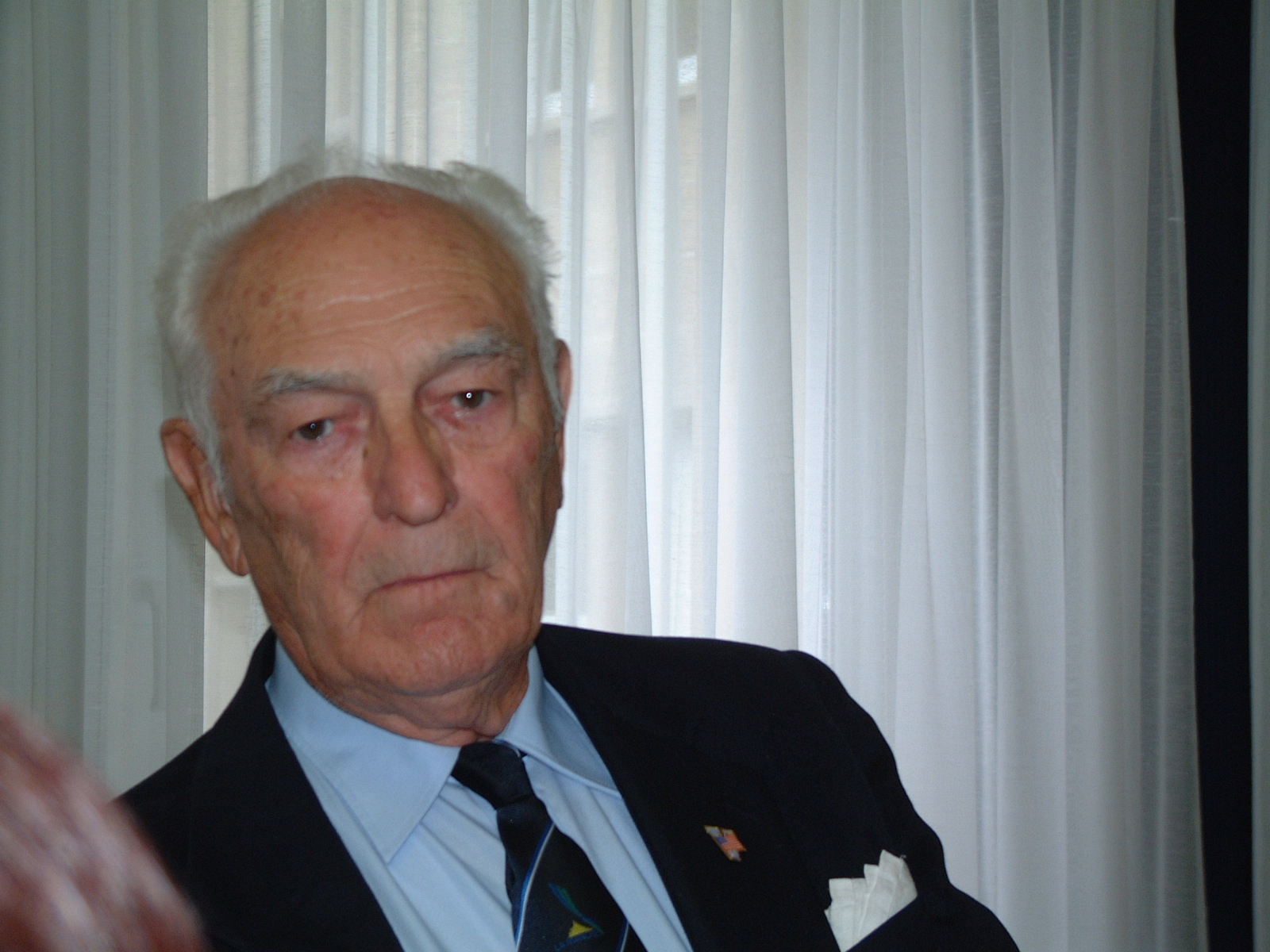
Frank W. Towers
March 1998
|
